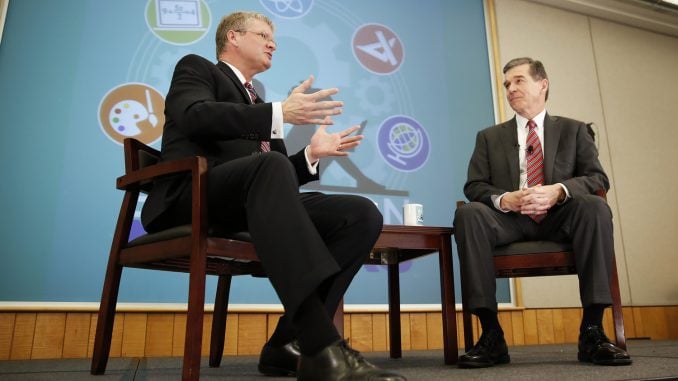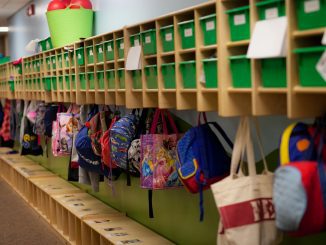
One of Gov. Roy Cooper’s main thrusts to wrestle power back from Republicans in Raleigh is to bemoan that not enough money is being spent on education. In fact, it was a central theme in his June veto of the budget, saying that spending “comes up short for education.” Despite an increase of $700 million over two years, Cooper said the Republican investment in education was “troubling.” Drew Elliot deftly pointed out in May the similarities on education spending between Cooper and Republicans, particularly the .4 percent difference in teacher pay raises. However, in politics, it’s often the rhetoric and not the substance that wins out.
Many citizens, including the majority in most states, believe that more and more educational funding for public schools is the magic potion for success. In many states, it’s hard to even fathom referendums for additional education spending not sailing to victory with ease at the ballot box. As far as myths go, it’s one of the most popular and enduring beliefs in today’s public policy debates.From a political perspective, even when Republicans keep an almost identical pace with Cooper’s calls for more spending, it’s never enough.
The good news is that North Carolina’s economic surge and fiscal responsibility has positioned our state well to spend more on education, but there is a greater requirement to move past stale calls for more spending and towards real reform.
To offer an example of how difficult that can be, Secretary of Education Betsy DeVos tried to flip the script on the national stage by offering up a budget that cuts $9 billion from almost $70 billion in federal education funds. Despite a $20 trillion federal debt, irritation over any proposed reductions was loud and immediate. And not just from the National Education Association or the American Federation of Teachers, but from Republicans as well. “This is a difficult budget request to defend,” Republican Sen. Roy Blunt told DeVos. “I think it’s likely that the kinds of cuts that are proposed in this budget will not occur.”
But DeVos’s lager point, while probably too controversial to come out and annunciate, was sound. Spending more does not equal better results. DeVos instead defended the cuts to some programs by saying that they were redundant or simply deemed “ineffective.” During the campaign President Trump was more brash in his critique calling the status quo, “an education system flush with cash, but which leaves our young and beautiful students deprived of all knowledge.”
A segment of the Department of Education, The National Center for Education Statistics, pumps out the same data as many other education studies and think tanks have been reporting for years: American students compared to other industrialized nations are below 29 other countries in testing on mathematics and below 22 other countries in science. Furthermore, the United States easily outspends almost every nation, including per student spending cost.
In “Education Myths” University of Arkansas professor Jay Greene aptly notes in his book: “If money were the solution, the problem would already be solved… We’ve doubled the per pupil spending, adjusting for inflation, over the last 30 years, and yet the schools aren’t better.”
It’s no secret that North Carolina is not one of the top spenders on education. But Republicans, and those open to reform, would be wise to not merely brag about their similarities to Cooper’s proposals, but differentiate themselves on solutions to where the status quo is failing North Carolinians.Competition and innovation is not a deterrent or hindrance for educational success in North Carolina, and must be seen as another solution. It’s time to fully embrace a broader range of choice for students across the state. Engaging in endless spending debates about the needed increase for education dollars is not only a political trap for Republicans, but a trap for students, only they don’t deserve to suffer the consequences.



